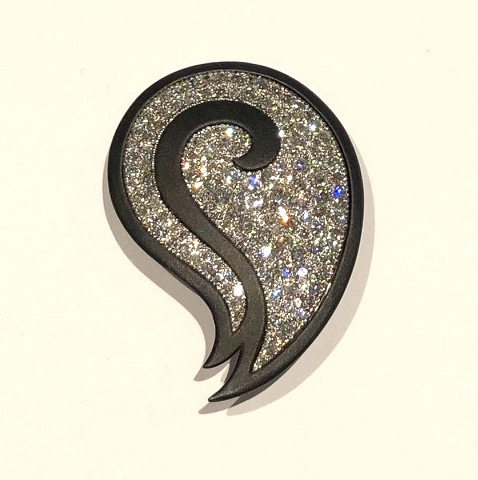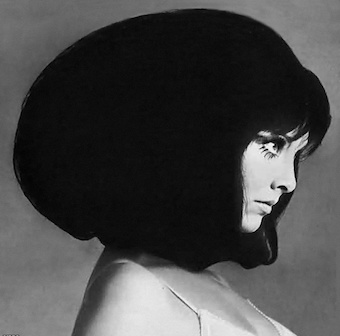Product Description
Marsh & Co. San Francisco, “Paisley” brooch with a blackened steel dramatic outline on an elaborate 18k gold frame and back in the shape of a paisley pave set with full cut round diamonds, c. 1950’s



G.T. Marsh was established in 1876 in San Francisco, CA as one of the first purveyors of Japanese art and antiques. In the early 30’s Marsh, with the help of his Italian bench jeweler settled on a unique style that will always be indicative of the firm. Instead of using gold or platinum, the jeweler, who was interested in gun-smithing, created a line of jewels using sandblasted steel finished with gun bluing. This resulted in a rich dark mat black finish. Chased or milegrained white gold or platinum offset pearls, jade or diamonds set against the black ground of the steel. Movement also played a part in the design. Hinged pearls or gemstones added yet another distinct element to the work or exceptionally strong contrasting graphics. The use of diamonds on a grander scale with the dramatic outline of a classic paisley form, places this brooch mid-century and at a time when Marsh’s Jewelry boutique was particularly flourishing in the Bay area.
Marsh & Co. San Francisco, “Paisley” brooch with a blackened steel dramatic outline on an elaborate 18k gold frame and back in the shape of a paisley pave set with full cut round diamonds, c. 1950’s
EDUARD STELLMACHER (designer) Turn-Teplitz, Austria
RIESSNER, STELLMACHER & KESSEL Turn-Teplitz, Austria
AMPHORA ART POTTERY Turn-Teplitz, Austria
Ewer c. 1900
Glazed porcelain
Marks: RStK MADE IN AUSTRIA Turn-Teplitz Bohemia, AMPHORA (in oval), 16, 531
For more information see: Deutsche Kunst und Dekoration, ( March 1901) pp. 346-349; Sammlung Bröhan: Kunsthandwerk, Glas, Holz, Keramik, Vol. 1 Band II (Berlin: Bröhan Museum, 1976), pp. 284-293.
H: 9″ x W: 7 1/2″ x D: 7″
